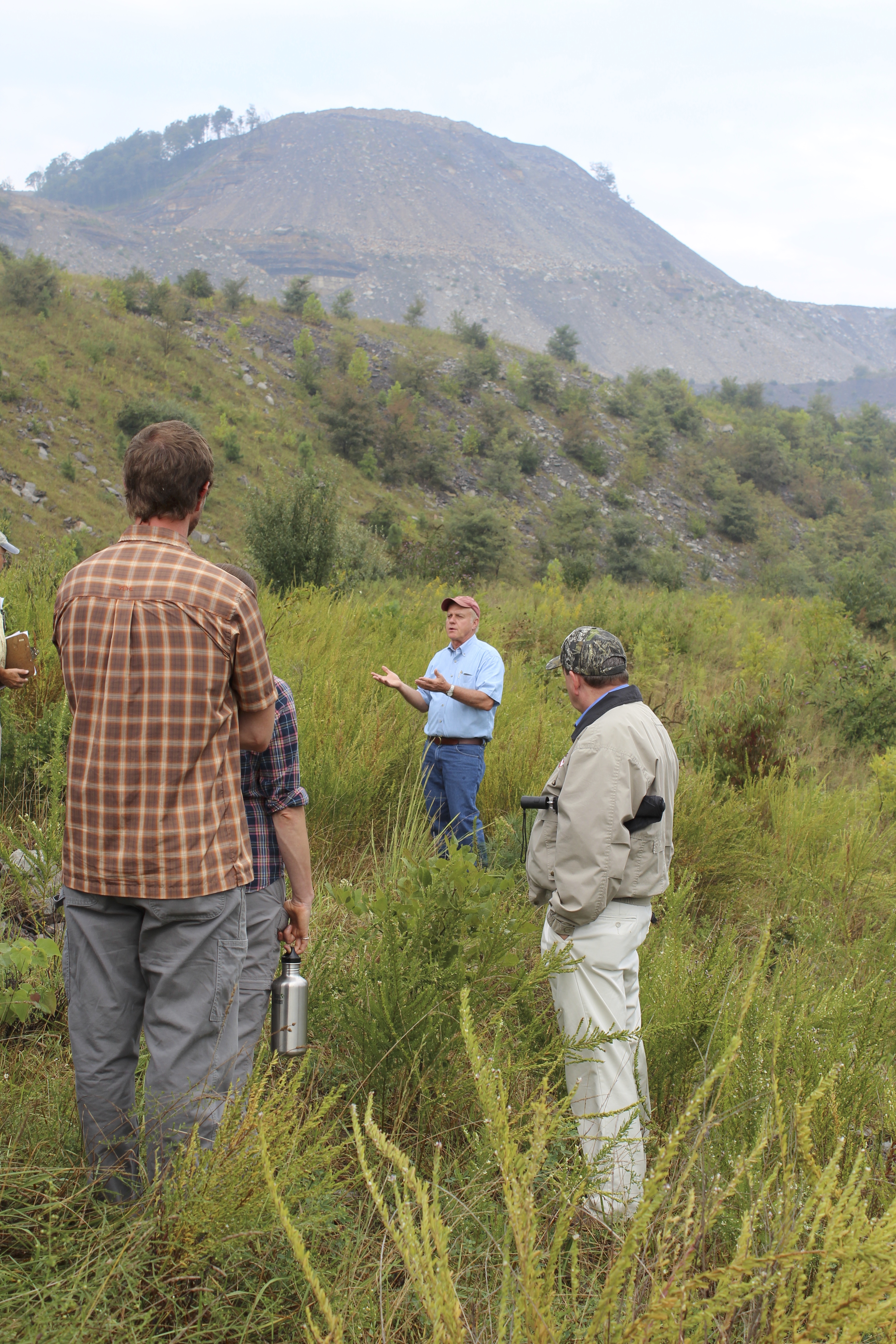Virginia coal fields environmental restoration project builds on its past with an eye to the future

When the seeds of the Powell River Project were planted more than 30 years ago, there was scant science on how to best restore lands disturbed by coal mining, much less any longevity of scientific research on the subject.
Three decades later, the Virginia Tech project has not only yielded groundbreaking research on how to restore natural processes to landscapes in Southwestern Virginia coal country, it has also produced evidence that has led to new reclamation practices that help repair the natural environment around the country. Now a new generation of scientists is examining issues including stream reconstruction, invasive species, microbial ecology, and carbon sequestration, among others.
“The research that has gone on at Powell River since 1980 has led to some of our nation’s most important discoveries in mine restoration,” said Paul Winistorfer, dean of the Virginia Tech College of Natural Resources and Environment and chairman of the Powell River Project’s board of directors. “We are not only building upon this great work but we are also looking ahead to tackle emerging challenges in this vitally important field that advances the science of sustainability.”
Over the years, a cadre of interdisciplinary scientists from the College of Agriculture and Life Sciences, the College of Natural Resources and Environment, the Virginia-Maryland Regional College of Veterinary Medicine, and others working at the site have broken new scientific ground on everything from forestry and soil reconstruction to water quality and the creation of wildlife habitat.
The Powell River Project Research and Education Center is a 1,100-acre site in Wise, Va., owned by long-term research sponsor PVR Partners L.P. and has been studied by Virginia Tech researchers since 1980. Research has also occurred at other mine sites throughout Virginia’s coalfields and beyond.
“In terms of integrated mined land reclamation research, the Powell River Project’s mix of investigators are the best in the world,” said W. Lee Daniels, a crop and soil environmental sciences professor in the College of Agriculture and Life Sciences who started on the project 33 years ago as a research assistant. “Without a doubt, this is the longest continually and intensively monitored mine reclamation research site in the world.”
One of the benefits for researchers working at the site is the ability to build on the scientific findings of those who came before them. More than 75 researchers earned their graduate degrees based upon research conducted at the site.
“This longevity of research is so important because it allows us to understand how the new ecological systems created by mine reclamation work over the long term,” said Carl Zipper, a professor of crop and soil environmental sciences and director of the Powell River Project, who began working on the program when he was a graduate student.
“If you look at the the level of disturbance that mining has caused, it is not surprising to see the natural processes initiated by the miners’ reclamation practices progressing over extended periods of time,” said Zipper, who is also a Virginia Cooperative Extension specialist. “This is the best way to gain an understanding of environmental processes that happen on these unique landscapes. The long-term cooperation and support of Virginia’s coal industry has made this research possible.”
While Zipper, Daniels, and others continue to work on projects that they have been immersed in for years, other scientists are embarking on new research that will continue to shape practices on how to successfully restore mined lands. Their work will not only help reclaim mined areas, but could be used as a model to further environmental restoration on landscapes that have been disturbed by practices such as transportation building and urban development.
Brian Badgley, an assistant professor of crop and soil environmental sciences, is characterizing the microbial communities in reclaimed mine soils in order to better understand how they recover during reclamation. Understanding the response of soil microbial communities to land reclamation approaches at the Powell River Project will provide critical additional information about which practices most successfully restore a functioning forest ecosystem.
Jacob Barney, an assistant professor of plant pathology, physiology, and weed science, is looking at how exotic species such as autumn olive bushes thrive in reclaimed mined areas and how to curb their spread.
Stephen Schoenholtz, a professor of forest hydrology and soils and director of the Virginia Water Resources Research Center, is looking into how the dynamics and functions of streams are affected when they are reconstructed after disturbance by mining.
Brian Strahm, an assistant professor of forest soils and ecology, is examining how to return natural processes to ecosystems that have been severely altered by mining by planting native hardwoods on the disturbed landscape. He is also working with The American Chestnut Foundation to explore ways to utilize reclaimed lands to bring the tree back to North America.
Dr. Dee Whittier, a professor of production management medicine and an Extension veterinarian, is researching how reclaimed mining land can be used to raise beef cattle while examining fertility issues as it relates to artificial insemination.
Dedicated to its motto, Ut Prosim (That I May Serve), Virginia Tech takes a hands-on, engaging approach to education, preparing scholars to be leaders in their fields and communities. As the commonwealth’s most comprehensive university and its leading research institution, Virginia Tech offers 240 undergraduate and graduate degree programs to more than 31,000 students and manages a research portfolio of $513 million. The university fulfills its land-grant mission of transforming knowledge to practice through technological leadership and by fueling economic growth and job creation locally, regionally, and across Virginia.




